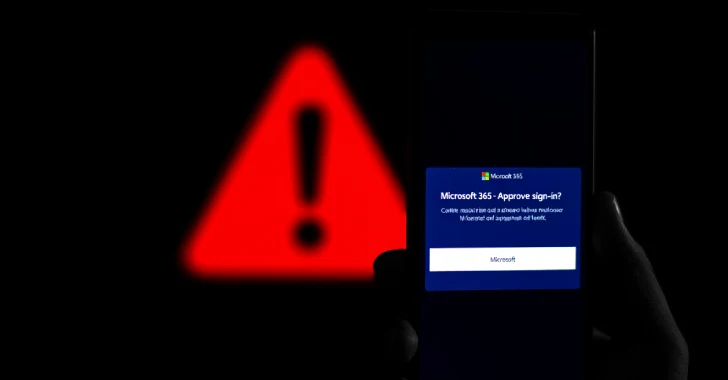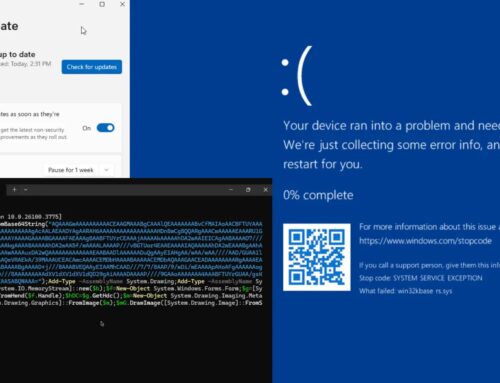
Experts Detect Multi-Layer Redirect Tactic Used to Steal Microsoft 365 Login Credentials
The digital landscape is a constant battleground, relentlessly challenging even the most sophisticated defense mechanisms. A stark reminder of this perpetual arms race comes from recent disclosures by cybersecurity researchers: a novel phishing campaign actively exploiting multi-layer redirect tactics to compromise Microsoft 365 login credentials. This sophisticated approach bypasses traditional security measures, highlighting a critical evolution in attacker methodology that demands immediate attention from IT professionals and security analysts.
The Evolving Threat: Multi-Layer Redirect Phishing
In a significant escalation of phishing sophistication, a new campaign has emerged, demonstrating an advanced technique to circumvent established security protocols. This method leverages multi-layer redirects, specifically abusing legitimate link wrapping services from vendors like Proofpoint and Intermedia. The core objective is to steal Microsoft 365 login credentials, a highly prized target for attackers due to the pervasive integration of Microsoft 365 across enterprises globally.
Understanding Link Wrapping and Its Exploitation
Link wrapping, inherently, is a security feature designed to protect users. Vendors such as Proofpoint implement this by routing all URLs clicked by a user through a proprietary scanning service. This allows the vendor to dynamically analyze the destination and block access to known malicious sites at the moment of the click, thereby preventing users from landing on dangerous pages. The ingenious aspect of this new phishing campaign lies in its ability to weaponize this very protection mechanism. By embedding malicious payloads within these legitimate link-wrapped URLs, attackers can effectively conceal their true intent until after the URL has been deemed “safe” by the wrapping service, thereby bypassing initial defenses.
The Mechanics of Concealment: Bypassing Defenses
The campaign’s success hinges on its ability to hide malicious content. By utilizing trusted email security gateways’ link wrapping capabilities, the malicious payload remains cloaked. When a user clicks a seemingly legitimate wrapped link, the initial scan by the security service determines the wrapped URL itself to be non-malicious. However, once the user is redirected, subsequent layers of redirection, controlled by the attackers, lead the victim to a convincing, but fake, Microsoft 365 login page. This multi-stage redirection chain is designed to evade detection by content filters and URL reputation services, which might only inspect the initial wrapped link.
Targeting Microsoft 365 Credentials: A High-Value Payoff
The focus on Microsoft 365 login credentials underscores the high value attackers place on these accounts. Compromised Microsoft 365 accounts can grant adversaries access to a treasure trove of sensitive information, including emails, cloud storage (OneDrive, SharePoint), collaborative documents, and access to other integrated business applications. This can lead to data breaches, corporate espionage, financial fraud, and further lateral movement within an organization’s network.
Remediation Actions and Proactive Defense
Countering such sophisticated attacks requires a multi-faceted approach, combining technological controls with robust user education. Organizations must prioritize the following remediation actions:
- Enhanced Email Security Gateway (ESG) Configuration: Review and strengthen configurations of existing ESGs. Ensure that sandboxing and deep URL inspection capabilities are fully utilized, even for links that appear to originate from legitimate wrapping services.
- Multi-Factor Authentication (MFA) Enforcement: Implement and strictly enforce MFA for all Microsoft 365 accounts, especially for administrators and privileged users. Even if credentials are compromised, MFA creates a significant barrier to unauthorized access.
- Security Awareness Training: Conduct regular, up-to-date security awareness training for all employees. Emphasize the dangers of phishing, especially those exhibiting advanced social engineering tactics and unusual redirect behaviors. Train users to critically inspect URLs, even after clicking, and to report suspicious emails.
- Endpoint Detection and Response (EDR) Systems: Utilize advanced EDR solutions to monitor endpoints for unusual activity, such as suspicious browser redirects, new process creations, or attempts to access credential stores after clicking a link.
- Conditional Access Policies: Implement Microsoft 365 Conditional Access policies to restrict access based on factors like device compliance, location, and IP address. This can prevent compromised accounts from being accessed from unusual or malicious locations.
- Continuous Threat Intelligence: Stay abreast of the latest phishing techniques and indicators of compromise (IoCs). Subscribe to reputable threat intelligence feeds and security advisories.
- Regular Penetration Testing and Phishing Simulations: Conduct periodic penetration tests and phishing simulation exercises to identify vulnerabilities in your defenses and gauge employee susceptibility to phishing attacks.
Tools for Detection and Mitigation
Organizations should leverage a combination of the following tools to detect and mitigate such advanced phishing attempts:
| Tool Name | Purpose | Link |
|---|---|---|
| Microsoft Defender for Office 365 | URL detonation, sandboxing, anti-phishing policies for Microsoft 365 environments. | https://learn.microsoft.com/en-us/microsoft-365/security/office-365-security/defender-for-office-365?view=o365-worldwide |
| Proofpoint Email Protection | Email security gateway with URL defense and sandboxing capabilities. | https://www.proofpoint.com/us/solutions/email-protection |
| Cisco Secure Email (formerly IronPort) | Advanced email security, including URL rewriting and sandboxing. | https://www.cisco.com/c/en/us/products/security/email-security/index.html |
| Mimecast Email Security | Email security, archiving, and continuity with URL protection features. | https://www.mimecast.com/products/email-security/ |
| Endpoint Detection and Response (EDR) Solutions | Detects and responds to suspicious activities on endpoints post-ingestion of malicious links. Examples: CrowdStrike Falcon, SentinelOne, Microsoft Defender for Endpoint. | https://www.crowdstrike.com/endpoint-detection-and-response/ |
Conclusion
The discovery of this multi-layer redirect phishing tactic serves as a critical wake-up call for organizations relying on standard email security measures. Attackers are constantly innovating, turning established security features into vectors for compromise. Effective defense against such sophisticated threats
necessitates a proactive, multi-layered security strategy that integrates advanced technological controls with robust employee awareness programs. Prioritizing MFA, enhancing email gateway configurations, and providing continuous user education are paramount in safeguarding against the persistent threat of credential theft and subsequent data breaches.





